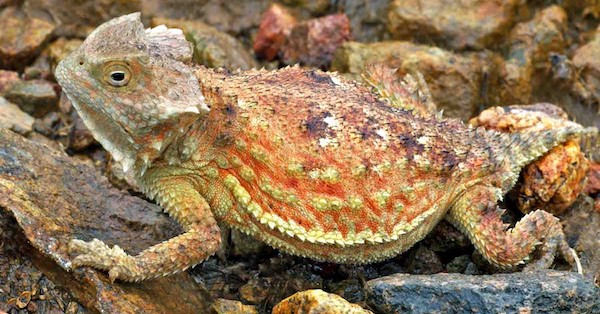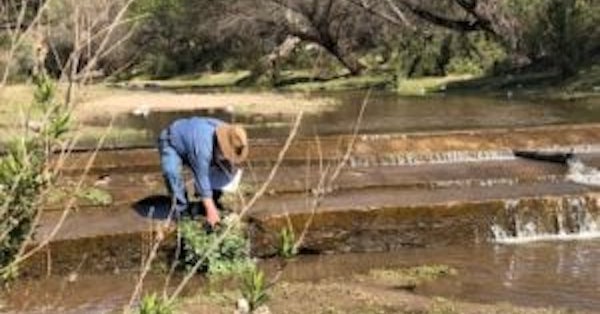Field Notes: Tracking the Elusive Rock Horned Lizard in Sonora
Greater Good Charities' team of expert scientists, students and conservationists recently returned from their Rancho Las Playitas Expedition, where they focused on learning more about one of the region’s most fascinating and little-known reptiles—the Rock Horned Lizard (Phrynosoma ditmarsi).
On this trip, the team captured several Rock Horned Lizards (Phrynosoma ditmarsi) to weigh, measure, mark, and release. Monitoring the lizards over a longer period of time like this is the best way to learn about this species without negatively impacting their environment.
The crew fitted four adults lizards with tiny transmitters and released them. Using a receiver and an antenna, the team can locate them for 5-6 months until the batteries lose their charges. They will be monitored every two weeks through December or later to learn more about their behavior.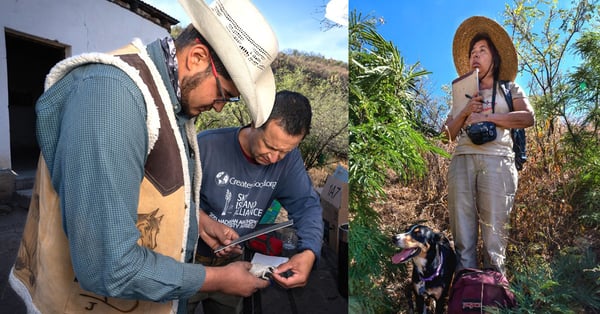
MDE crew-mates José Abel and Guillermo measuring Phrynosoma ditmarsi #18. Ana Lilia and Athena looking for PD#3
Photo by Robert Villa
Rock Horned Lizards have large, block-shaped heads and deep jaws, with the characteristic horns of their species fused into broad, blade-like wedges. Their coloring is one of their most fascinating traits: at night, they darken to blend in with the rocks and shadows, while daylight transforms them into shades of red, gray, or yellow.
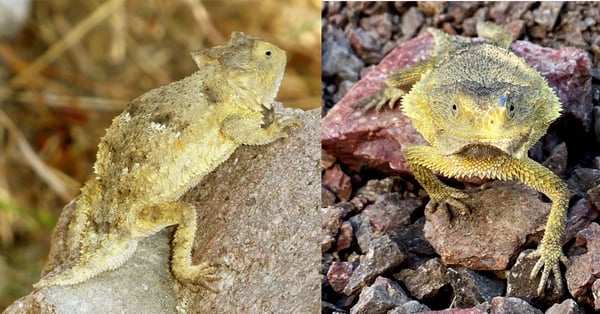
New Rock Horned Lizard - PD#23
Photos by Ana Lilia Reina and Robert Villa
Finding them, however, is no easy task. PD#5 (P. ditmarsi #5) sat still for nearly an hour before it was found. Another lizard, PD#18, managed to shed its skin with the transmitter attached to it. Fortunately, PD#18 was relocated and the transmitter reattached.
While looking for PD#18, the team found four new lizards on the same hill. These included the biggest female seen so far out of 25 animals (most were juveniles) and two males.
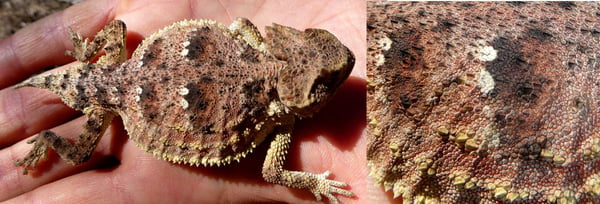
New Rock Horned Lizard - PD#24
Photos by Ana Lilia Reina and Robert Villa
Most of the tracked lizards moved only 3-4 feet between monitoring sessions, though one traveled nearly 300 feet—the length of a football field. The current theory is that they sit and wait for food to come by but keep moving to new spots. These lizards are very alert, but not alarmed by big slow-moving animals like cows or people.
The team also conducted feeding observations and discovered that Rock Horned Lizards primarily eat a variety of small and medium-sized grasshoppers, as well as beetles. Larger prey, like the Great Plains Lubber (Brachysola magna), triggers their impressive defensive behaviors. When encountering these larger grasshoppers, they flattened their bodies, lowering their heads to expose their horns, or turned sideways to use their spiny backs as shields. PD#25 first calmly ate a grasshopper but ran away very fast and hid under nearby plants when our dog Athena sniffed her. 
The Rock Horned Lizards ate Lakin (Melanoplus lakinus) and Humphrey’s (Barytettix humphreysii) grasshoppers.
Photos by Guillermo Molina and Ana L. Reina-G.
These discoveries are possible thanks to the support of Greater Good Charities' donors. Together, we’re advancing conservation through science, collaboration, and care for the planet’s most unique and overlooked species.
The natural history of this rare lizard was mostly a mystery before this project. Your support fuels discoveries that protect biodiversity for generations to come.

